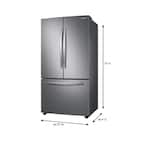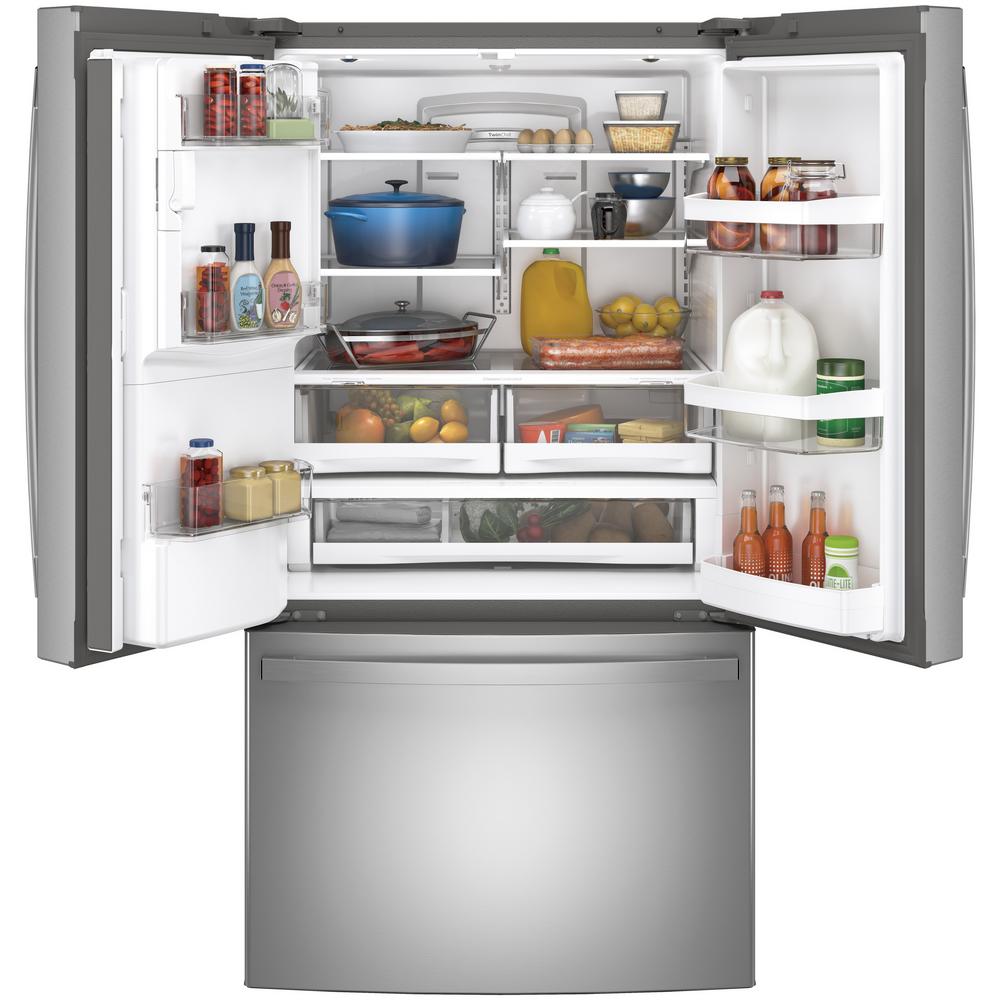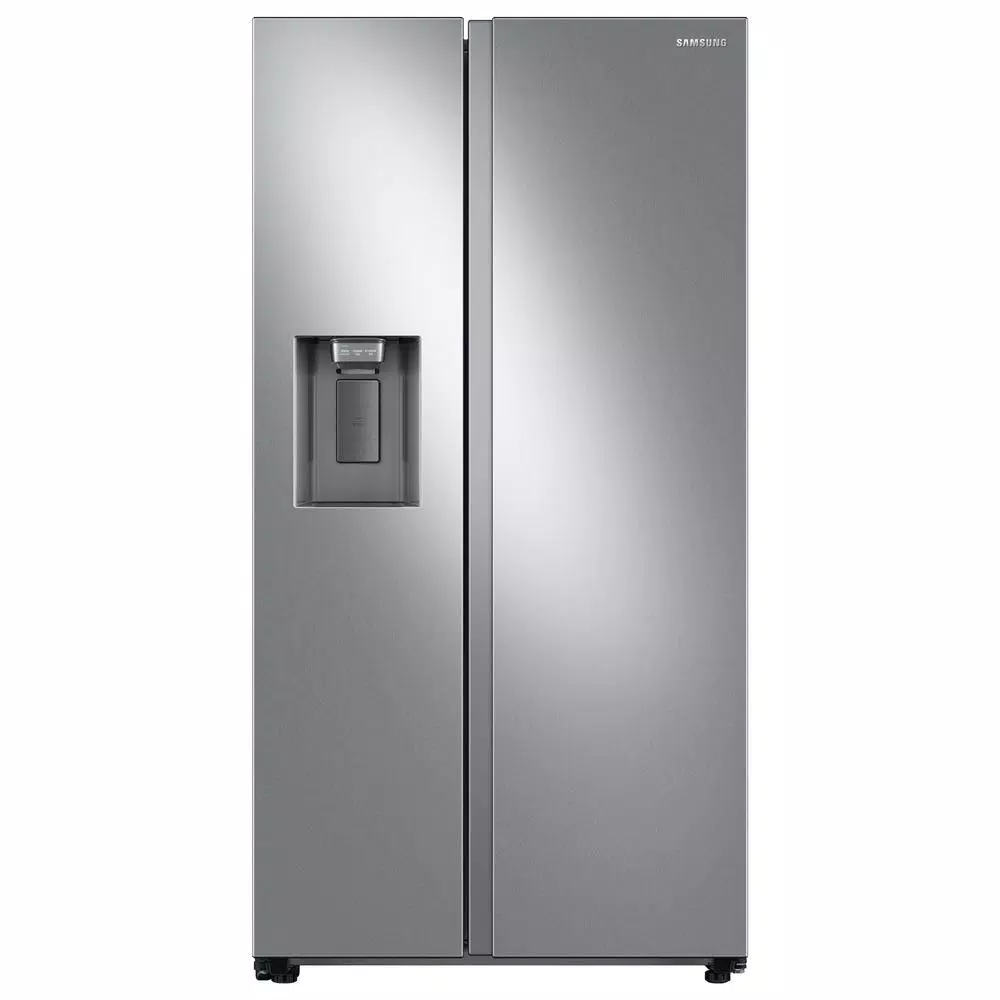Samsung 28.2 cu. ft. French Door Refrigerator in Stainless Steel
Large 28 cu. ft. capacity with new, redesigned interior fits more. Modern Design and Clean lines blend beautifully into your kitchen. Fingerprint Resistant Finish withstands everyday smudging.
Samsung’s 28 cu. ft. large capacity 3-Door French Door refrigerator is beautifully designed, with sleek-edge doors, and EZ open handles. The clean lines and modern form blend beautifully into your kitchen while the fingerprint resistant finish withstands everyday smudges.
- Large Capacity – A completely redesigned interior with 28 cu. ft. capacity that fits 10% more groceries, when compared to Samsung 3-Door model RF260BEAE with 25.5 cu. ft capacity
- Modern Design – Clean lines and modern form blend beautifully into your kitchen
- Fingerprint Resistant Finish – A finish that withstands everyday smudges, so you spend less time cleaning
- All-Around Cooling – Multi-vent technology keeps items on every shelf evenly cooled
- Large capacity ice maker, stores up to 5.5 lbs. of ice
- Full-Width Drawer – Large drawer space for storing party platters, deli items, beverages and more
- High-Efficiency LED Lighting – LED lighting designed to beautifully light up the interior of your fridge so you can quickly spot what you want
- EZ-Open Handle – Specially designed handle allows for easy opening and closing of a fully loaded freezer. Automatically slides out for easy access, organization and storage
- ENERGY STAR Certified – Eco-friendly and energy-efficient Visit www.energstar.gov for more information on Energy Star guidelines
- Accessibility (ADA Compliant) – Easy to reach controls for everyone
- Adjustable Shelving – Middle shelf can be easily adjusted to fit taller items
- Sabbath Mode – Adjusts your refrigerator to meet requirements of certain religious laws for holidays and days of rest
Additional information
| Depth (Excluding Handles) (In) | 32.8 |
|---|---|
| Depth (Including Handles) (In) | 35.4 |
| Depth (Less Door) (In) | 28.8 |
| Depth With Door Open 90 Degrees (In) | 47.2 |
| Height to Top of Door Hinge (in.) | 70 |
| Height to Top of Refrigerator (in.) | 68.8 |
| Product Depth x Height x Width (in.) | 35.4 x 70 x 35.75 |
| Refrigerator Width (In.) | 35.75 |
| Certifications and Listings | ADA Compliant,Energy Star,UL Listed |
| Manufacturer Warranty | Five (5) years Parts and Labor on sealed Refrigeration system only* Ten (10) years Part and Five (5) years Labor on Digital Inverter Compressor (*Compressor, evaporator, condenser, drier, connecting tubing) |






by Brian
Very nice stainless steel, French door refrigerator!
by Nana
Very nice refrig. Roomy, lots of storage space with adjustable shelves for easy viewing and retrieval of items. Freezer is huge, makes lots of ice and we never run out. Like this refrig very much.
by Frankie
Love it!! Lots of room inside. Plenty of room in doors to put gallon sizes of milk or juice. Freezer holds quite a bit, makes plenty of ice everyday.